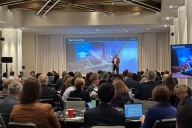You have /5 articles left.
Sign up for a free account or log in.
The last book I read was an excellent thriller called The Short Drop, written by Matthew FitzSimmons.
Can understanding why we buy the books that we do tell us anything about why people make choices about colleges and universities?
What is the analogue between a consumer book buying decision, and an individual decision around higher ed?
How much is the publishing industry like the higher ed industry?
What does the way that books are now sold tell us (if anything) about the future of higher ed?
I purchased and read The Short Drop for 4 reasons:
1 - Reviews: The Washington Post published a very positive review of the book, a review that seemed to match the overall Amazon customer reviews.
2 - Cost: The Kindle version costs $1.99. Adding the audio version also cost $1.99. This brought the total cost of the e-book and audiobook to $3.98.
3 - Whispersync: A synced e-book / audiobook changes the experience of reading. The ability to go seamlessly back and forth between eyes and ears creates reading momentum.
4 - iPhone and Kindle: I purchased and read most of the book on my iPhone. For reading I used the free Kindle app - an app that enables easy switching between audio and (eye) reading. For longer reading sessions, I rely on my Kindle Paperwhite.
Can you tease out any lessons for higher ed from my decision to buy The Short Drop?
Is there a story here about quality, or pricing, innovation in delivery mechanisms, or new platforms?
Is a $3.98 digital / audio book just a book (just a consumer purchase) - or are there larger lessons that we can draw from individual book buying decisions for higher ed?
Can thinking about the shifting relationships between publishing and technology - including the resilience of bookstores and of physical books - help us think more clearly about where higher ed may be going?








